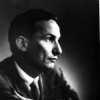Rudolf Arnheim

Rudolf Arnheim
Rudolf Arnheimwas a German-born author, art and film theorist, and perceptual psychologist. He learned Gestalt psychology from studying under Max Wertheimer and Wolfgang Köhler at the University of Berlin and applied it to art. His magnum opus was his book Art and Visual Perception: A Psychology of the Creative Eye. Other major books by Arnheim have included Visual Thinking, and The Power of the Center: A Study of Composition in the Visual Arts. Art and Visual Perception was revised, enlarged...
NationalityGerman
ProfessionArtist
Date of Birth15 July 1904
CountryGermany
Furthermore, order is a necessary condition for making a structure function. A physical mechanism, be it a team of laborers, the body of an animal, or a machine, can work only if it is in physical order.
Order is a prerequisite of survival; therefore the impulse to produce orderly arrangements is inbred by evolution.
A revolution must aim at the destruction of the given order and will succeed only by asserting an order of its own.
Order is a necessary condition for anything the human mind is to understand.
Both art and science are bent on the understanding of the forces that shape existence, and both call for a dedication to what is. Neither of them can tolerate capricious subjectivity because both are subject to their criteria of truth. Both require precision, order, and discipline because no comprehensible statement can be made without these. Both accept the sensory world as what the Middle Ages called signatura regrum, the signature of things, but in quite different ways.
The rehabilitation of order as a universal principle, however, suggested at the same time that orderliness by itself is not sufficient to account for the nature of organized systems in general or for those created by man in particular.
In many instances, order is apprehended first of all by the senses.
Order is a necessary condition for making a structure function. A physical mechanism, be it a team of laborers, the body of an animal, or a machine, can work only if it is in physical order.
Orderliness by itself is not sufficient to account for the nature of organized systems in general or for those created by man in particular. Mere orderliness leads to increasing impoverishment and finally to the lowest possible level of structure, no longer clearly distinguishable from chaos, which is the absence of order. A counterprinciple is needed, to which orderliness is secondary. It must supply what is to be ordered.
Form is sometimes considered a mere spice added by the artist to the representation of objects in order to make it pleasurable.
The absurd consequences of neglecting structure but using the concept of order just the same are evident if one examines the present terminology of information theory.
Man's striving for order, of which art is but one manifestation, derives from a similar universal tendency throughout the organic world; it is also paralleled by, and perhaps derived from, the striving towards the state of simplest structure in physical systems.
Today we no longer regard the universe as the cause of our own undeserved troubles but perhaps, on the contrary, as the last refuge from the mismanagement of our earthly affairs.
Since mechanically obtained randomness contains all kinds of possible permutations, including the most regular ones, it cannot be relied upon always to exhibit a pervasive irregularity.